Here below, is a bit of history on how Russia marked his presence in the Icy Continent with its several Scientific Bases at the beginning of international scientific expeditions to Antarctica.
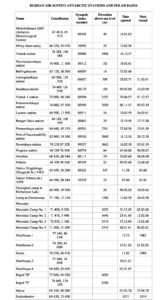 The first plans for a Soviet Antarctic expedition were drawn up just before the second International Polar Year (1932-1933), but the expedition never took place. Soviet Antarctic expeditions began general, comprehensive scientific research covering the southern oceans as well as the Antarctic mainland in 1956, when preparations were begun for International Geophysical Year (IGY).
The first plans for a Soviet Antarctic expedition were drawn up just before the second International Polar Year (1932-1933), but the expedition never took place. Soviet Antarctic expeditions began general, comprehensive scientific research covering the southern oceans as well as the Antarctic mainland in 1956, when preparations were begun for International Geophysical Year (IGY).
In February 1956 the participants in the Soviet Antarctic Expedition (SAE) established the Mirny observatory, a Scientific Station (WAP RUS-Ø7) on the Antarctic mainland.
In May 1956, observations were begun at Pionerskaya (WAP RUS-1Ø), an inland station located some 375 kms South of Mirny.
In October 1956 the Oasis Station (WAP RUS-NEW) began working, located at the Bunger Oasis, on the coast of Wilkes Land.
The inland station Vostok-1 (WAP RUS-14), Komsomolskaya (WAP RUS-Ø5) and Vostok (WAP RUS-13) were founded in 1957; the latter was located near the South Magnetic Pole.
In 1958 the Sovetskaya (RUS-NEW) and Polyus Nedostupnosti (Pole of Inaccessibility Stations WAP RUS-NEW) began observations.
Between 1956 and 1958 eight stations were thus established under the IGY program. After IGY, observations continued at the Mirny observatory and the Vostok station.
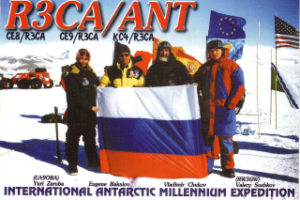
In the following years a number of permanent, seasonal and temporary stations and bases were built.
As form 1968, Molodezhnaya (WAP RUS-Ø8) became the main base of Antarctic research as well as the Antarctic Meteorological Centre.
Year-round observations are now made at five stations of the Russian Antarctic Expedition (RAE): Molodezhnaya (WAP RUS-Ø8), Mirny (WAP RUS-Ø7), Novolazarevskaya (WAP RUS-Ø9), Bellingshausen (WAP RUS-Ø1) and Vostok (WAP RUS-13 which was temporarily closed in 1994). They measure meteorological and upper-air parameters, receive satellite information, an measure the levels of total ozone and of several other atmospheric trace gases. They also conduct a number of studies of the ionosphere.
Source: https://www.wmo.int/pages/prog/www/Antarctica/Ant-cat-Rus-Fed.html
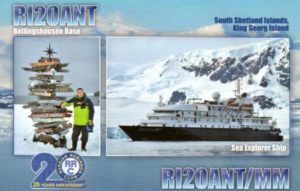 We would like to remark that Russia is probably the solo Country that have always been “On the Air” since the Antarctic epic, with hundreds of very professional Radio operators that, still now are very active on HF Hams bands. Our appreciation to the constancy and tenacity of all Russian radio amateurs who are an example of professionalism!
We would like to remark that Russia is probably the solo Country that have always been “On the Air” since the Antarctic epic, with hundreds of very professional Radio operators that, still now are very active on HF Hams bands. Our appreciation to the constancy and tenacity of all Russian radio amateurs who are an example of professionalism!
Let us not forget that , to celebrate the 20th anniversary of the Russian Robinson Club, RRC club members Alexander/RW3RN and Oleg/UA3HK/ZS1OIN have been active on last December 2013, from the Russian Antarctic station “Bellingshausen” on the Island of King George signing RI2ØANT &.RI2ØANT/MM
 Cochin University of Science and Technology (CUSAT) in Kochi, India, did select two young researchers to participate in the 39th Indian-Antarctic Science Exploration.
Cochin University of Science and Technology (CUSAT) in Kochi, India, did select two young researchers to participate in the 39th Indian-Antarctic Science Exploration. 
 Sixty years ago, twelve nations agreed to set aside Antarctica “for peaceful purposes only”, as a scientific preserve for “the progress of all mankind”, met in Washington, D.C. to sign an unprecedented document: the Antarctic Treaty. The original signatories were the 12 countries active in Antarctica during the International Geophysical Year (IGY) .
Sixty years ago, twelve nations agreed to set aside Antarctica “for peaceful purposes only”, as a scientific preserve for “the progress of all mankind”, met in Washington, D.C. to sign an unprecedented document: the Antarctic Treaty. The original signatories were the 12 countries active in Antarctica during the International Geophysical Year (IGY) . The Australian Antarctic Medal, established in 1987, is an award in the Meritorious Service Awards category of the Australian Honours System. The Australian Antarctic Medal replaced the (British) Imperial Polar Medal and its variations which date back to 1857 for service in the Arctic and Antarctic regions.
The Australian Antarctic Medal, established in 1987, is an award in the Meritorious Service Awards category of the Australian Honours System. The Australian Antarctic Medal replaced the (British) Imperial Polar Medal and its variations which date back to 1857 for service in the Arctic and Antarctic regions.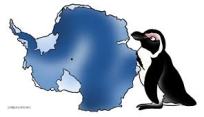 Professor Anne-Marie Brady has been worried about China’s intentions in Antarctica for years.
Professor Anne-Marie Brady has been worried about China’s intentions in Antarctica for years.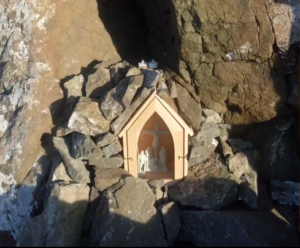 For the anniversary of the canonization of St. Agnes of Bohemia and thanks to the Czeck polar explorers, a small chapel in honor of the Saints Wenceslaus I, Agnes of Bohemia and Ludmilla has been set in Antarctica!
For the anniversary of the canonization of St. Agnes of Bohemia and thanks to the Czeck polar explorers, a small chapel in honor of the Saints Wenceslaus I, Agnes of Bohemia and Ludmilla has been set in Antarctica!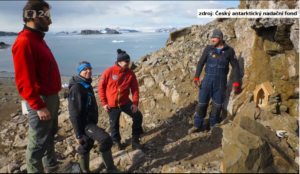 Inside the chapel there is a sculpture of “Crucifixion” and a statue of “St. Wenceslas” by Milan Houser, Tomáš Medek and Jiří Pec.
Inside the chapel there is a sculpture of “Crucifixion” and a statue of “St. Wenceslas” by Milan Houser, Tomáš Medek and Jiří Pec. from the MIUR (Italian Ministry of University and Research), to be used as a research vessel and logistical support in Antarctica. So I/B Enest Shackleton, has been renamed as R/V Laura Bassi, heir of the old R/V OGS Explora and R/V Italica.
from the MIUR (Italian Ministry of University and Research), to be used as a research vessel and logistical support in Antarctica. So I/B Enest Shackleton, has been renamed as R/V Laura Bassi, heir of the old R/V OGS Explora and R/V Italica.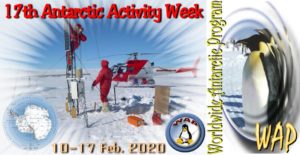 It’s time to book your special callsign.
It’s time to book your special callsign.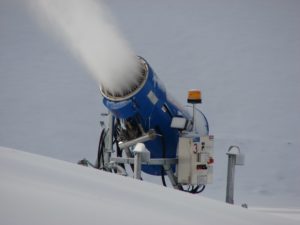 Antarctica’s western ice sheet is in danger of collapsing, but scientists may have an unusual solution: blasting trillions of tons of artificial snow across glaciers with snow cannons.
Antarctica’s western ice sheet is in danger of collapsing, but scientists may have an unusual solution: blasting trillions of tons of artificial snow across glaciers with snow cannons. In a new study published in the journal Biological Conservation, an international team of researchers recommends the need for additional measures to protect and conserve one of the most iconic Antarctic species – the emperor penguin (Aptenodyptes forsteri).
In a new study published in the journal Biological Conservation, an international team of researchers recommends the need for additional measures to protect and conserve one of the most iconic Antarctic species – the emperor penguin (Aptenodyptes forsteri).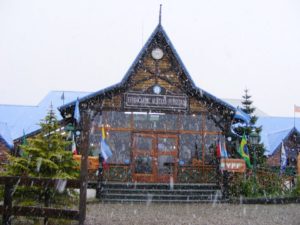
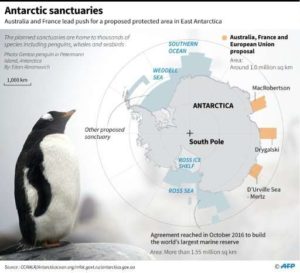 A multinational effort to create giant marine sanctuaries around Antarctica to counter climate change and protect fragile ocean ecosystems has failed for an eighth straight year.
A multinational effort to create giant marine sanctuaries around Antarctica to counter climate change and protect fragile ocean ecosystems has failed for an eighth straight year. Five people have beaten off competition from more than 200 people to run the UK’s most remote post office in Antarctica. The team will man the UK Antarctic Heritage Trust’s Post Office at Port Lockroy for four months.
Five people have beaten off competition from more than 200 people to run the UK’s most remote post office in Antarctica. The team will man the UK Antarctic Heritage Trust’s Post Office at Port Lockroy for four months.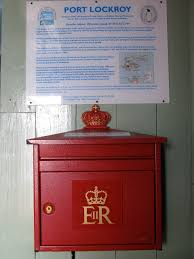 The new postmasters start work in November and return to the UK in March. Each year, the UK Antarctic Heritage Trust, which is based in Cambridge, advertises for a new intake of seasonal postal workers.
The new postmasters start work in November and return to the UK in March. Each year, the UK Antarctic Heritage Trust, which is based in Cambridge, advertises for a new intake of seasonal postal workers.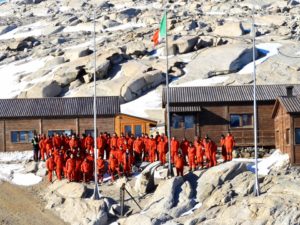 With the traditional flag-raising of the XXXV Italian Antarctic Expedition at Mario Zucchelli Station (WAP ITA-Ø1) the PNRA (Italian National Research Program in Antarctica), begins the 2019-2020 Antarctic Season.
With the traditional flag-raising of the XXXV Italian Antarctic Expedition at Mario Zucchelli Station (WAP ITA-Ø1) the PNRA (Italian National Research Program in Antarctica), begins the 2019-2020 Antarctic Season.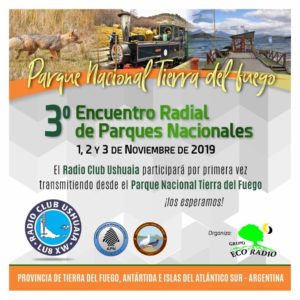 Hams from Tierra del Fuego (Argentina) WAP ARG-23 will join the 3rd Argentine National Parks Event which will be held the 1st, 2nd and 3rd November.
Hams from Tierra del Fuego (Argentina) WAP ARG-23 will join the 3rd Argentine National Parks Event which will be held the 1st, 2nd and 3rd November.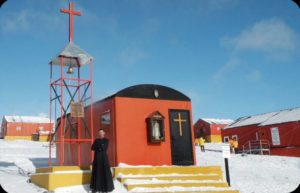 The structure of the chapel is made of steel and is used for Catholic worship by the various Argentine staff members at the station (as well as visitors). The chapel has a bell tower and a cross. In the chapel there is a replica of the Virgin of Luján solemnly moved from her sanctuary in Buenos Aires before its inauguration.
The structure of the chapel is made of steel and is used for Catholic worship by the various Argentine staff members at the station (as well as visitors). The chapel has a bell tower and a cross. In the chapel there is a replica of the Virgin of Luján solemnly moved from her sanctuary in Buenos Aires before its inauguration.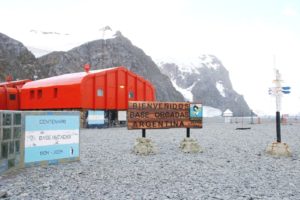 It was blessed and inaugurated on April 15, 1996 by Norberto Eugenio Martina, a military bishop of Argentina, on whom the Argentine Antarctic chaplain depends. Currently the chapel at Orcadas Base (WAP ARG-15) is the southernmost Catholic temple in Argentina, and one of the southernmost on the planet.
It was blessed and inaugurated on April 15, 1996 by Norberto Eugenio Martina, a military bishop of Argentina, on whom the Argentine Antarctic chaplain depends. Currently the chapel at Orcadas Base (WAP ARG-15) is the southernmost Catholic temple in Argentina, and one of the southernmost on the planet.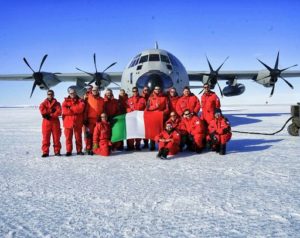

 We awarded the Base Commanders with WAP certificates in sign of our long friendship.
We awarded the Base Commanders with WAP certificates in sign of our long friendship.
 TNX IK2IWU, IZ1GJK, IK1GPG & IK1QFM and ARI Mondovì
TNX IK2IWU, IZ1GJK, IK1GPG & IK1QFM and ARI Mondovì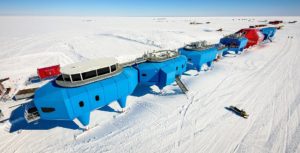 Antarctica is actually in full swing; Reserchers in transit to the Icy Continent, others already in site, and others that are preparing to reach the Bases of destination. It is normal that program can change as well as changes in callsign for Ham radio operators.
Antarctica is actually in full swing; Reserchers in transit to the Icy Continent, others already in site, and others that are preparing to reach the Bases of destination. It is normal that program can change as well as changes in callsign for Ham radio operators.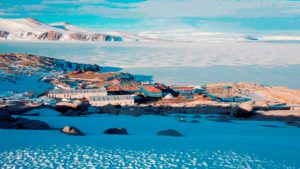
 The next operator at DPØGVN for the wintering season 2020 will be Roman, HB9HCF. He plans to be active on QO-100 satellite; not sure about HF yet.
The next operator at DPØGVN for the wintering season 2020 will be Roman, HB9HCF. He plans to be active on QO-100 satellite; not sure about HF yet. Roman is a new operator, he has taken his license so that he can use QO-100 setup at Neumayer III. Felix (DL5XL) will introduce him to HF for sure, and even if he has no experience at all, let’s hope he will find amusement and interest in Ham Radio activity from Antarctica!
Roman is a new operator, he has taken his license so that he can use QO-100 setup at Neumayer III. Felix (DL5XL) will introduce him to HF for sure, and even if he has no experience at all, let’s hope he will find amusement and interest in Ham Radio activity from Antarctica!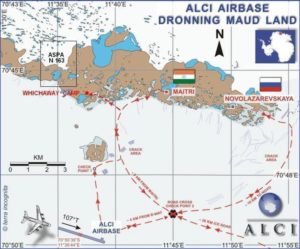 Oleg Sakharov (UA1PBA, RI1ANF, RI1ANX, etc,) a great Antarctic veteran is leaving to Antarctica again tomorrow (Oct.21st 2019) via Punta Arenas, Chile.
Oleg Sakharov (UA1PBA, RI1ANF, RI1ANX, etc,) a great Antarctic veteran is leaving to Antarctica again tomorrow (Oct.21st 2019) via Punta Arenas, Chile. On Mid December a group of Italian Researchers will be on the way to Concordia Station. Two of them have Ham License: Marco IK5SQX will stop for a while at Cape Prud’Homme (pic aside) before joining a traverse to Concordia while Nicola IZ7ZNZ will fly to Concordia via MZS (WAP ITA-Ø1)
On Mid December a group of Italian Researchers will be on the way to Concordia Station. Two of them have Ham License: Marco IK5SQX will stop for a while at Cape Prud’Homme (pic aside) before joining a traverse to Concordia while Nicola IZ7ZNZ will fly to Concordia via MZS (WAP ITA-Ø1)
 François F8DVD informs that at the beginning of 2020, he will use 2 special calls relating to Antarctic and Sub-Antarctic activities as follow:
François F8DVD informs that at the beginning of 2020, he will use 2 special calls relating to Antarctic and Sub-Antarctic activities as follow: Italian-French camp, opened in 1994, managed by the (French Polar Institute Paul-Emile Victor (IPEV) and the Programma Nazionale di Ricerche in Antartide (PNRA). It is located on the coast of the Antarctic Ice sheet, in Adélie Land, about 5 km from Petrel Island, where the French Dumont d’Urville Station is. All the supplies and equipment for the Italian-French Concordia Station (aka Dome C, WAP MNB-Ø3) are transported by a combined convoy of up to 7 Caterpillar tractors from Cap Prud’Homme , with Kassbohrer trailblazers and a team of up to 9 people; each convoy transports an average of 150 tons of payload..
Italian-French camp, opened in 1994, managed by the (French Polar Institute Paul-Emile Victor (IPEV) and the Programma Nazionale di Ricerche in Antartide (PNRA). It is located on the coast of the Antarctic Ice sheet, in Adélie Land, about 5 km from Petrel Island, where the French Dumont d’Urville Station is. All the supplies and equipment for the Italian-French Concordia Station (aka Dome C, WAP MNB-Ø3) are transported by a combined convoy of up to 7 Caterpillar tractors from Cap Prud’Homme , with Kassbohrer trailblazers and a team of up to 9 people; each convoy transports an average of 150 tons of payload..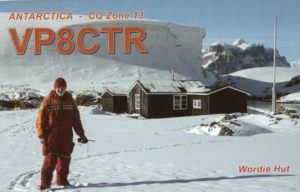
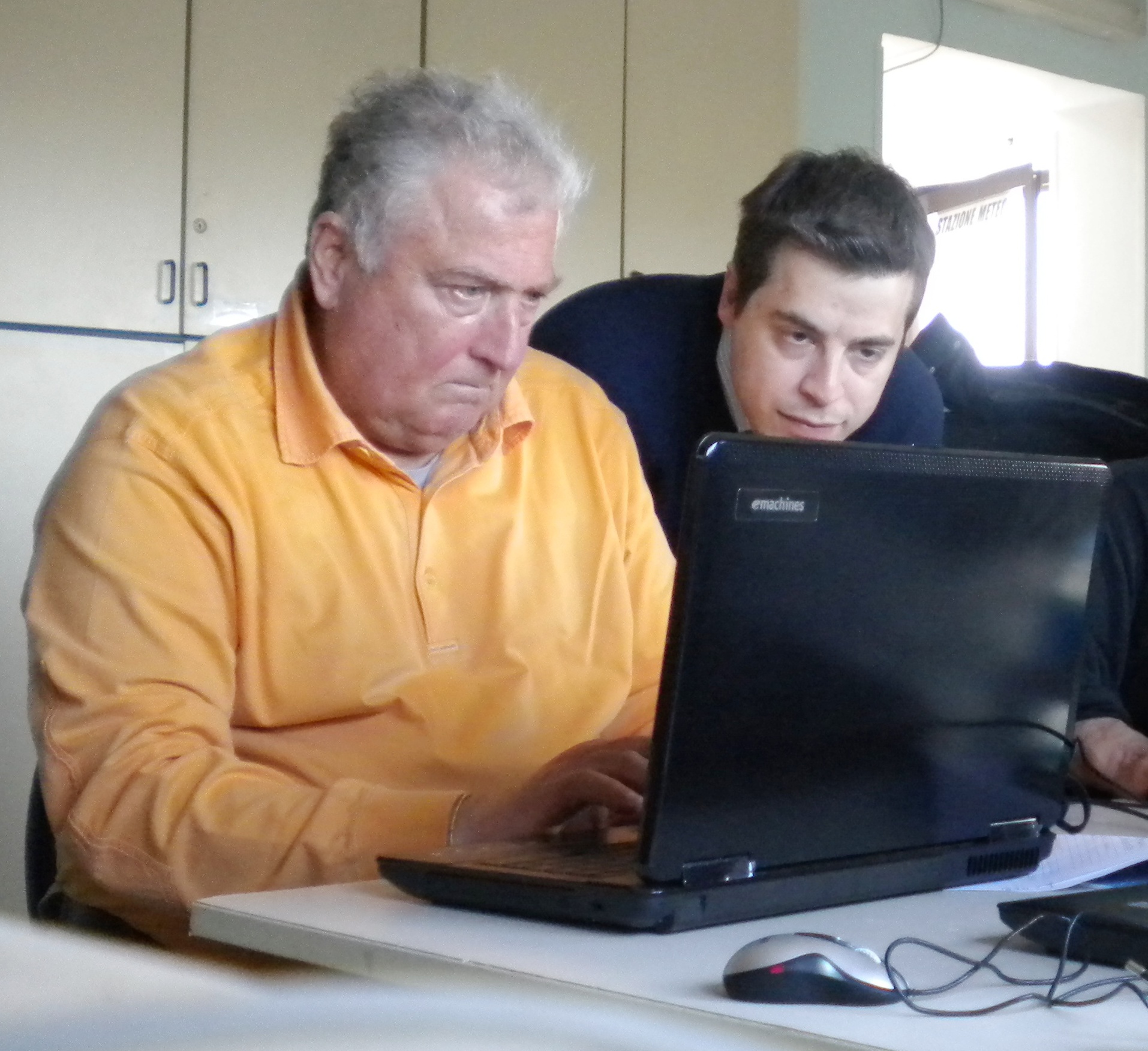 Thanks to Gianluigi IZ8EWB, a young engineer who have carried on hours and hours of work, WAP website is again online.
Thanks to Gianluigi IZ8EWB, a young engineer who have carried on hours and hours of work, WAP website is again online. Hams from Italy and few coming from neighboring European Countries have joined the 18th DCI Meeting (Italian Castles), IFFA (Flora and Fauna) and 16th Worldwide Antarctic Program (WAP).
Hams from Italy and few coming from neighboring European Countries have joined the 18th DCI Meeting (Italian Castles), IFFA (Flora and Fauna) and 16th Worldwide Antarctic Program (WAP). The first plans for a Soviet Antarctic expedition were drawn up just before the second International Polar Year (1932-1933), but the expedition never took place. Soviet Antarctic expeditions began general, comprehensive scientific research covering the southern oceans as well as the Antarctic mainland in 1956, when preparations were begun for International Geophysical Year (IGY).
The first plans for a Soviet Antarctic expedition were drawn up just before the second International Polar Year (1932-1933), but the expedition never took place. Soviet Antarctic expeditions began general, comprehensive scientific research covering the southern oceans as well as the Antarctic mainland in 1956, when preparations were begun for International Geophysical Year (IGY).
 We would like to remark that Russia is probably the solo Country that have always been “On the Air” since the Antarctic epic, with hundreds of very professional Radio operators that, still now are very active on HF Hams bands. Our appreciation to the constancy and tenacity of all Russian radio amateurs who are an example of professionalism!
We would like to remark that Russia is probably the solo Country that have always been “On the Air” since the Antarctic epic, with hundreds of very professional Radio operators that, still now are very active on HF Hams bands. Our appreciation to the constancy and tenacity of all Russian radio amateurs who are an example of professionalism! It was on 20 November 1984 that China dispatched its first Antarctic research expedition team, and by the end of this expedition, the country established its first Antarctic research station, the Great Wall Station on 20 February 1985. So far, China has done 35 national Antarctic expeditions and established two year-round research stations, namely the Great Wall Station (1985) in West Antarctica and the Zhongshan Station (1989) located in the Larsemann Hills, East Antarctica; one inner land summer station, the Kunlun Station (2009) located on “Dome A”, the highest place in Antarctica and one camp, namely the Taishan Camp (2014) located in Princess Elizabeth Land.
It was on 20 November 1984 that China dispatched its first Antarctic research expedition team, and by the end of this expedition, the country established its first Antarctic research station, the Great Wall Station on 20 February 1985. So far, China has done 35 national Antarctic expeditions and established two year-round research stations, namely the Great Wall Station (1985) in West Antarctica and the Zhongshan Station (1989) located in the Larsemann Hills, East Antarctica; one inner land summer station, the Kunlun Station (2009) located on “Dome A”, the highest place in Antarctica and one camp, namely the Taishan Camp (2014) located in Princess Elizabeth Land. Comprehensive Investigation and Assessment Programs” (2015-2020). Regarding Antarctica, the Program comprises three parts: the Antarctic Marine Environment Survey, the Antarctic Terrestrial Environment Survey and the Comprehensive Assessment of the Antarctic Environment. The program is implemented through a series of surveys and assessments, involving various disciplines. In addition, China continues to conduct routine observations at the Great Wall Station (WAP CHN-Ø1)and the Zhongshan Station (WAP CHN-Ø2). To strengthen international cooperation in Antarctic research, international participants are encouraged to join in the Program through collaboration with national institutes and universities. Notably, China has been preparing to launch its fifth Antarctic research station, which is expected to be finalized by 2022.
Comprehensive Investigation and Assessment Programs” (2015-2020). Regarding Antarctica, the Program comprises three parts: the Antarctic Marine Environment Survey, the Antarctic Terrestrial Environment Survey and the Comprehensive Assessment of the Antarctic Environment. The program is implemented through a series of surveys and assessments, involving various disciplines. In addition, China continues to conduct routine observations at the Great Wall Station (WAP CHN-Ø1)and the Zhongshan Station (WAP CHN-Ø2). To strengthen international cooperation in Antarctic research, international participants are encouraged to join in the Program through collaboration with national institutes and universities. Notably, China has been preparing to launch its fifth Antarctic research station, which is expected to be finalized by 2022.

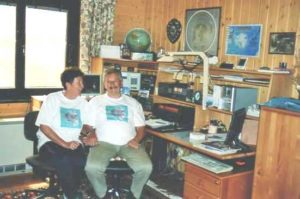 Gus Smitka OE3SGA is a real Old Timer and for long time a keen DXer and Antarctic Hunter.
Gus Smitka OE3SGA is a real Old Timer and for long time a keen DXer and Antarctic Hunter.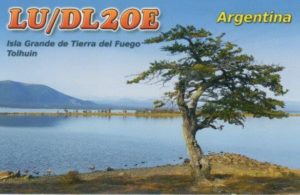
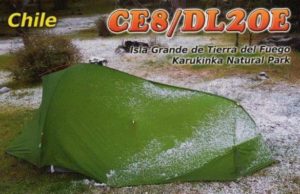
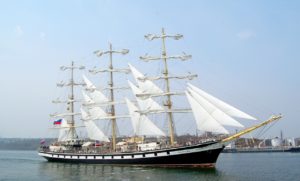 In effect, 2020 marks the 200th anniversary of the discovery of Antarctica by the expedition led by Fabian Bellingshausen and Mikhail Lazarev. In honor of this event, plans are underway for the round-the-world sailing of the tall ships Pallada (
In effect, 2020 marks the 200th anniversary of the discovery of Antarctica by the expedition led by Fabian Bellingshausen and Mikhail Lazarev. In honor of this event, plans are underway for the round-the-world sailing of the tall ships Pallada (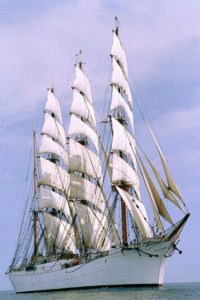 , the Vostok, commanded by Fabian Bellingshausen, and the Mirny, commanded by Mikhail Lazarev, left Kronstadt in 1819 and discovered Antarctica on 28 January 1820. In 1821, the ships returned to Kronstadt. They stayed at sea for 751 days and covered over 92,000 km. In addition to Antarctica, the expedition discovered 29 islands and one coral reef. The Russian sailors conducted scientific research, including oceanographic research.
, the Vostok, commanded by Fabian Bellingshausen, and the Mirny, commanded by Mikhail Lazarev, left Kronstadt in 1819 and discovered Antarctica on 28 January 1820. In 1821, the ships returned to Kronstadt. They stayed at sea for 751 days and covered over 92,000 km. In addition to Antarctica, the expedition discovered 29 islands and one coral reef. The Russian sailors conducted scientific research, including oceanographic research.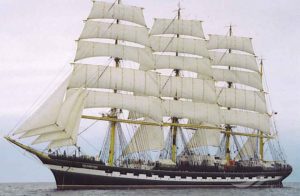
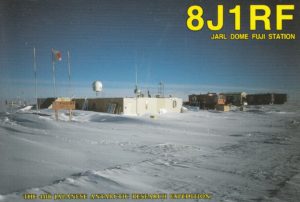 Dome-Fuji Station, 77°30’South, 37°30’East was established in January, 1995 to conduct deep ice-core drilling at the highest dome of Dronning Maud Land, some 1000 km away from Syowa Station. After completing 3035 m deep drilling, the station is being closed temporarily.
Dome-Fuji Station, 77°30’South, 37°30’East was established in January, 1995 to conduct deep ice-core drilling at the highest dome of Dronning Maud Land, some 1000 km away from Syowa Station. After completing 3035 m deep drilling, the station is being closed temporarily.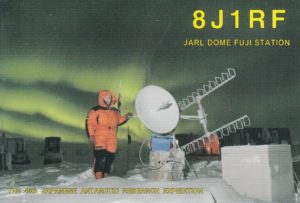
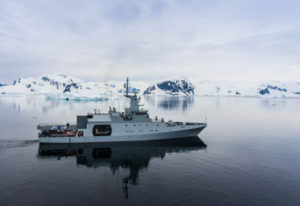 Colombia plans to set up its base at a point along the Gerlache Strait, a body of water 100 miles long and 20 miles wide that separates the Palmer Archipelago from the Danco Coast on the western side of the Antarctic Peninsula.
Colombia plans to set up its base at a point along the Gerlache Strait, a body of water 100 miles long and 20 miles wide that separates the Palmer Archipelago from the Danco Coast on the western side of the Antarctic Peninsula.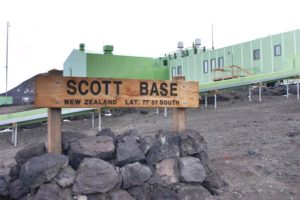 During this Antarctic Winter Season there are at least 4 Stations active:
During this Antarctic Winter Season there are at least 4 Stations active: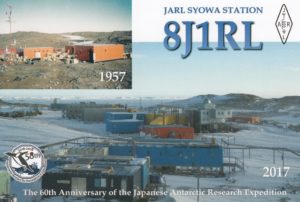
 A “Church in Antarctica” as well as any other signs or place of worship in any corners of the Icy Continent are the most sincere examples of faith and genuine places of worship; they deserve to be known.
A “Church in Antarctica” as well as any other signs or place of worship in any corners of the Icy Continent are the most sincere examples of faith and genuine places of worship; they deserve to be known. facing the Station buildings. A second bigger one, is sets little lower. Both statues are located in the great rock on which the lighthouse stands out (62°09′28″South 58°27′56″West), and people at Arctowski, call this corner “Chapel”.
facing the Station buildings. A second bigger one, is sets little lower. Both statues are located in the great rock on which the lighthouse stands out (62°09′28″South 58°27′56″West), and people at Arctowski, call this corner “Chapel”. No way to put a statue on cargo ship that brought the supplies to Arctowski. The workers hid the statue of the Virgin in a deep cargo box and smuggled it out of Polish border. Now both signs of devotion are proudly on the site that Polish staff did choose for them.
No way to put a statue on cargo ship that brought the supplies to Arctowski. The workers hid the statue of the Virgin in a deep cargo box and smuggled it out of Polish border. Now both signs of devotion are proudly on the site that Polish staff did choose for them. Norbert Maibaum (DL SWL), from Bonn, Germany is a very active Antarctic Chaser.
Norbert Maibaum (DL SWL), from Bonn, Germany is a very active Antarctic Chaser.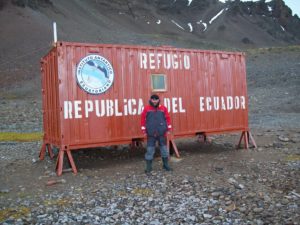 Republica del Ecuador it’s an Antarctic Refuge located at Hennequin Point, 62°07’16” South, 58°23’42” West inside the Admiralty Bay on King George Island (or 25 de Mayo Island). It was installed by the first Antarctic expedition of Ecuador and inaugurated on January 13, 1988 with the assistance of delegations from Germany, Argentina, Brazil, Chile, United States, Poland, Russia and Uruguay, which have Bases, scientific stations and shelters in the island. Its first occupants were Ecuadorian scientists who performed hydrographic and geological works. Republica del Ecuador Refuge consists of a six-meter container that has basic medical supplies, non-perishable food and two bunk beds with a capacity for four people. It is for researchers and tourists who want to rest or study the area.
Republica del Ecuador it’s an Antarctic Refuge located at Hennequin Point, 62°07’16” South, 58°23’42” West inside the Admiralty Bay on King George Island (or 25 de Mayo Island). It was installed by the first Antarctic expedition of Ecuador and inaugurated on January 13, 1988 with the assistance of delegations from Germany, Argentina, Brazil, Chile, United States, Poland, Russia and Uruguay, which have Bases, scientific stations and shelters in the island. Its first occupants were Ecuadorian scientists who performed hydrographic and geological works. Republica del Ecuador Refuge consists of a six-meter container that has basic medical supplies, non-perishable food and two bunk beds with a capacity for four people. It is for researchers and tourists who want to rest or study the area.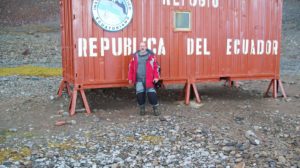 stop on Republica del Ecuador Refuge on Febr.22, 2009 just before landing on Macchu Pichu Base (WAP PER-Ø1).
stop on Republica del Ecuador Refuge on Febr.22, 2009 just before landing on Macchu Pichu Base (WAP PER-Ø1).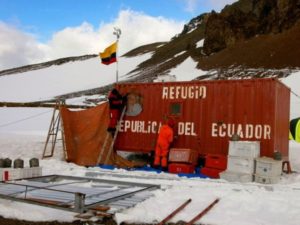 INOCAR (Oceanographic Institute of the Navy), performed the integral maintenance of the Refuge including graffiti, repair of walls, ceiling and floor.(pic on the right)
INOCAR (Oceanographic Institute of the Navy), performed the integral maintenance of the Refuge including graffiti, repair of walls, ceiling and floor.(pic on the right)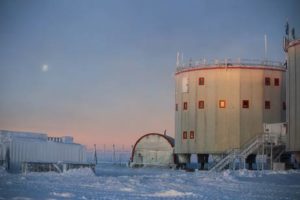 “Sun or not, the view is magical”.
“Sun or not, the view is magical”.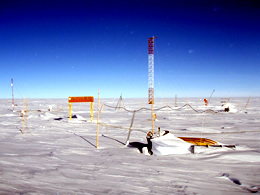 Mizuho Station 70°41’58’’South, 44°16’52’’East was established as a summer Base in July, 1970 on the Mizuho Plateau, 2230 mts above sea level, 270 km south-east of Syowa Station (WAP JPN-Ø3). Mizuho Station (WAP JPN-Ø2) in one of the fourth Japanese scientific installations in Antarctica.
Mizuho Station 70°41’58’’South, 44°16’52’’East was established as a summer Base in July, 1970 on the Mizuho Plateau, 2230 mts above sea level, 270 km south-east of Syowa Station (WAP JPN-Ø3). Mizuho Station (WAP JPN-Ø2) in one of the fourth Japanese scientific installations in Antarctica.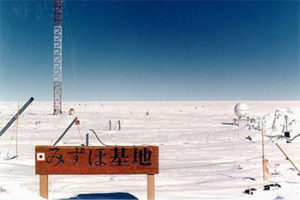 occupied for meteorological and glaciological observations.
occupied for meteorological and glaciological observations.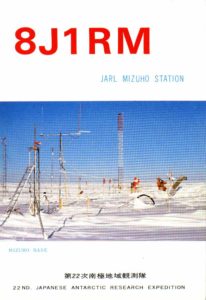
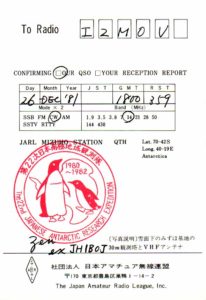
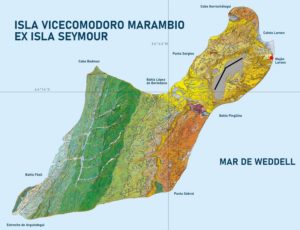 Larsen cairn, 64°14’13” South and 56° 35′ 7″ West, is located 2 kilometers from the facilities of Marambio Base (WAP ARG-21)direction E-N-E (76˚) and 230 meters to the S-E-S of the Chavez lighthouse, 40 meters above sea level and 70 meters from the coast.
Larsen cairn, 64°14’13” South and 56° 35′ 7″ West, is located 2 kilometers from the facilities of Marambio Base (WAP ARG-21)direction E-N-E (76˚) and 230 meters to the S-E-S of the Chavez lighthouse, 40 meters above sea level and 70 meters from the coast.
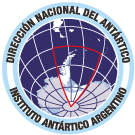 For this reason, the footprints of the first Antarctic pioneers have an extraordinary heritage value for all mankind. The historical sites of the sixth continent are so scarce, that, in all its extension, including the surrounding islands, we find less than one hundred of them, however, a new site has been added to that select list thanks to the work promoted by the Argentine Antarctic Program, promoted by the National Antarctic Directorate (DNA), through the Argentine Antarctic Institute (IAA).
For this reason, the footprints of the first Antarctic pioneers have an extraordinary heritage value for all mankind. The historical sites of the sixth continent are so scarce, that, in all its extension, including the surrounding islands, we find less than one hundred of them, however, a new site has been added to that select list thanks to the work promoted by the Argentine Antarctic Program, promoted by the National Antarctic Directorate (DNA), through the Argentine Antarctic Institute (IAA).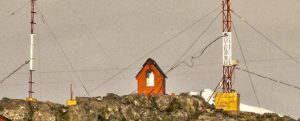 The “Capilla Cristo Caminante”, is located up in the hill behind San Martin Station (WAP ARG-Ø8). The pics aside show the closest shots of the Chapel of which, so far we do not have better visualizing.
The “Capilla Cristo Caminante”, is located up in the hill behind San Martin Station (WAP ARG-Ø8). The pics aside show the closest shots of the Chapel of which, so far we do not have better visualizing.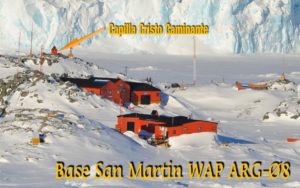
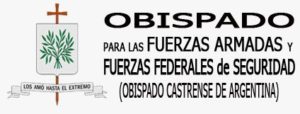
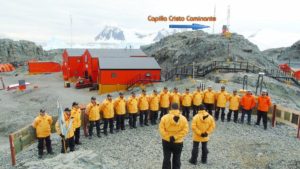
 Mr. Fabricio Tavares from Brazil, is the responsible of a Twitter account which loads so many useful Antarctic information; he wrote: – Congratulations for the important job WAP website accomplishes! Feel free to use any info WAP may wants from my Twitter account-.
Mr. Fabricio Tavares from Brazil, is the responsible of a Twitter account which loads so many useful Antarctic information; he wrote: – Congratulations for the important job WAP website accomplishes! Feel free to use any info WAP may wants from my Twitter account-.

 Amateur Radio Circle of the Army Telecommunications School, set a test in the field, to evaluate response capabilities in case of Emergency. They did install stations Emergency communications and test transmissions in HF, VHF, UHF with its repeaters and Digital voice systems in DMR, managing to communicate with more than a hundred stations.
Amateur Radio Circle of the Army Telecommunications School, set a test in the field, to evaluate response capabilities in case of Emergency. They did install stations Emergency communications and test transmissions in HF, VHF, UHF with its repeaters and Digital voice systems in DMR, managing to communicate with more than a hundred stations.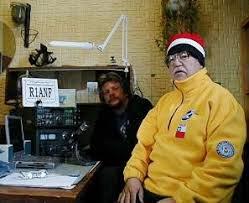 d; nevertheless the emergency practice can be exported in Antarctica as well where the situation is sometimes worse than in the Continent!
d; nevertheless the emergency practice can be exported in Antarctica as well where the situation is sometimes worse than in the Continent!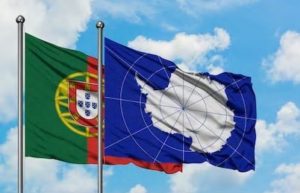 A cooperation agreement between the Portuguese Polar Program (PROPOLAR) and the Bulgarian Antarctic Institute has been signed at the University of Lisbon. The occasion was the tenth anniversary of the start of Bulgarian-Portuguese studies in Antarctica and the establishment of Portugal’s National Polar Program.
A cooperation agreement between the Portuguese Polar Program (PROPOLAR) and the Bulgarian Antarctic Institute has been signed at the University of Lisbon. The occasion was the tenth anniversary of the start of Bulgarian-Portuguese studies in Antarctica and the establishment of Portugal’s National Polar Program.
 WAP is looking for some pics of Refugio Cabo Gutierrez Vargas (WAP CHL-NEW) which is located 1Km close to the Presidente Aguirre Cerda Base (WAP CHL-Ø4). On several websites it is reported that ruins of the Refuge are still in place. On last 2011, Mehdi F5PFP was very close to it, when he did activate Presidente Aguirre Cerda Base (CE9XX, see QSL on the side); Mehdi reports to have seen the remaining of this Refuge but he did not take direct picture of it!
WAP is looking for some pics of Refugio Cabo Gutierrez Vargas (WAP CHL-NEW) which is located 1Km close to the Presidente Aguirre Cerda Base (WAP CHL-Ø4). On several websites it is reported that ruins of the Refuge are still in place. On last 2011, Mehdi F5PFP was very close to it, when he did activate Presidente Aguirre Cerda Base (CE9XX, see QSL on the side); Mehdi reports to have seen the remaining of this Refuge but he did not take direct picture of it!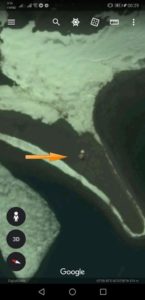 Refugio Cabo Gutierrez Vargas so called in memory of the aviation Captain who died on December 30, 1955, was located at 1 kilometer (0.62 mi) from Aguirre Cerda Station and was inaugurated on February 12, 1956. Its purpose was to serve as a Refuge for the members of the Station in case of fire.
Refugio Cabo Gutierrez Vargas so called in memory of the aviation Captain who died on December 30, 1955, was located at 1 kilometer (0.62 mi) from Aguirre Cerda Station and was inaugurated on February 12, 1956. Its purpose was to serve as a Refuge for the members of the Station in case of fire.